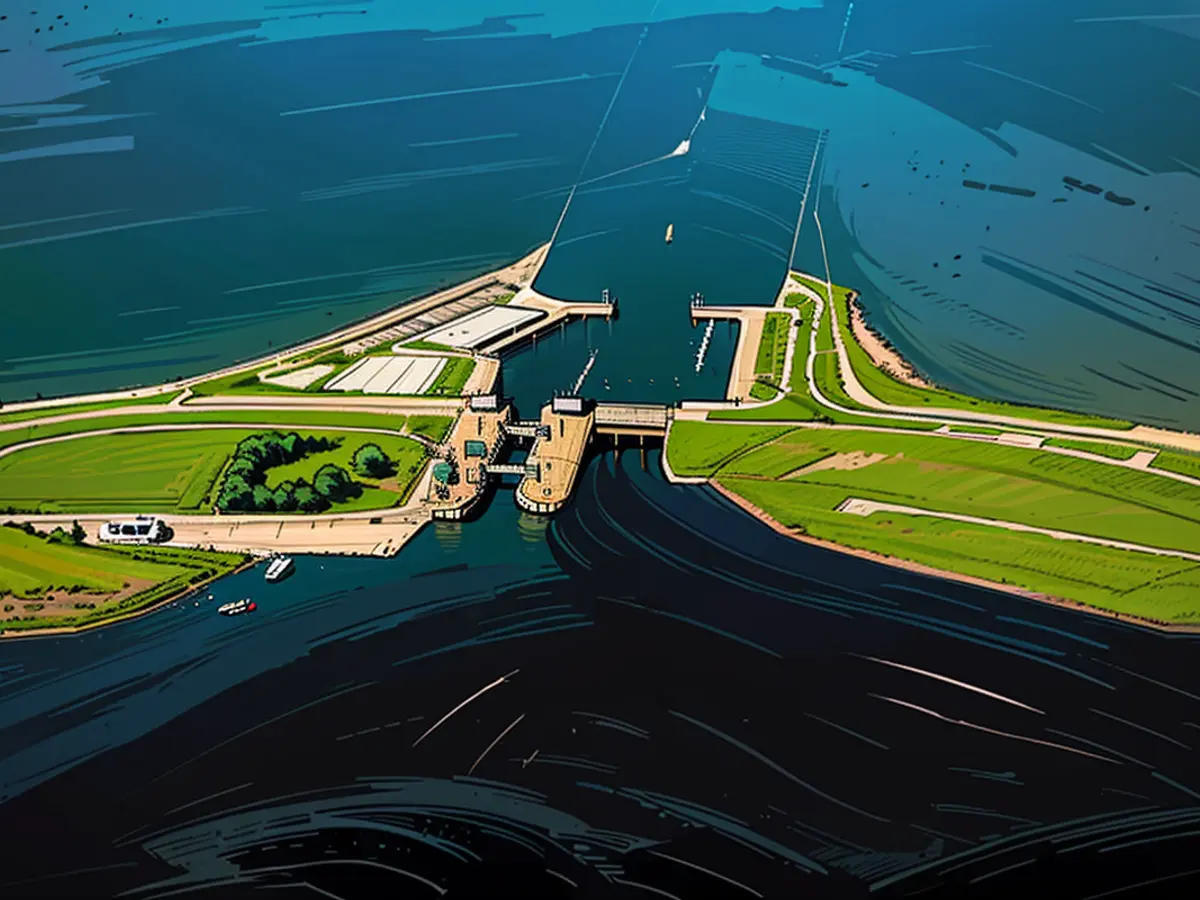In the region of East Friesland, water extraction becomes an active requirement
Rising sea levels are becoming a major issue, climbing at an alarming rate and staying high for a long period. How long can we guard our coastlines with seawalls? What actions are we currently taking, and can the Wadden Sea endure the sea level increase? Kerstin Jochumsen, director of the Marine Science Department at the Federal Maritime and Hydrographic Agency (BSH) in Hamburg, discusses Germany's coastal situation amidst climate change in an interview.
ntv.de: Ms. Jochumsen, where do we stand with sea level rise in Germany today, and what precautions should we prepare for?
Kerstin Jochumsen: Based on our data, we can observe a 20-centimeter rise in sea level over the past 100 years. While the rate varies from location to location and can be influenced by human activities and construction projects, in general, there's a trend toward higher water levels, which is accelerating.
As of now, experts predict that sea level rise may reach around a meter by 2100. This is a fairly pessimistic projection, assuming high levels of CO2 emissions. Germany has ratified the Paris Climate Agreement, and if we manage to achieve the 2-degree goal, sea level rise might be slightly less severe.
Both the national, regional, and local governments plan to take precautions beyond what may be necessary in the short term. This proactive approach makes sense, as reaching the one-meter sea level increase is not a matter of if but when.
What measures can we take against sea level rise?
Some processes are irreversible, and some events that are already underway cannot be halted. For instance, ice-related processes have lengthy time frames and take time to establish equilibrium. The melting will persist for some time, no matter how emissions evolve in the future. Water emissions play a significant role in determining the magnitude of sea level rise.
Can we mitigate a meter [sic]?
Lower Saxony and Schleswig-Holstein are raising their seawalls by one meter, a project already underway. There exists a so-called climate reserve should the sea level rise further. The concern is how deep the base of the seawall should be. Can it be expanded? This may be challenging in urban areas, as homes or infrastructure may obstruct such changes. Nevertheless, such adaptations are being considered and implemented.
Will coastal communities remain inhabitable?
Certainly. Although this is a long-term issue, it's one that calls for immediate, well-thought-out solutions. The one-meter rise will eventually occur, although not overnight. With time, we can plan and implement these solutions effectively. Additionally, it's wise to think about climate reserves now, ensuring a more sustainable and resilient future. It's also worth noting that limiting climate change can save money in the long run by reducing the costs associated with extreme events and protective measures.
Can seawall construction be the same everywhere? The North and Baltic Seas have drastically different coastlines.
Yes, depending on coastal geography, seawall design can vary significantly. In the North Sea, we have flat lands protected by sea walls. However, the Baltic Sea has coastal areas with minimal protection. Here, sandy cliffs can erode following a storm surge. It's often challenging to protect these areas. Ultimately, what cities prioritize depends on feasibility and local budgets.
I must stress that our definition of a storm surge at the BSH includes any flood above 1.50 meters over the mean high water level. As sea levels rise and mean flood levels increase, protective measures in normal conditions and storm surges will require different, more extensive measures.
What about inland water discharge? Will it flow into the sea as easily if the sea level is higher?
Yes, that was seen in Northern Germany during Christmas and New Year's Eve 2023/2024, where high water levels marked many areas. In East Frisia, areas located below sea level need regular dewatering during heavy rainfall. This becomes more difficult with higher sea levels. Previously, sluices or gates would allow water to escape. However, if these no longer function with the higher sea levels, active pumping is now required. New infrastructure must be built, and energy is required to actively pump out the water as it no longer drains naturally.
What about the Wadden Sea? Can it survive a one-meter sea level rise?
Research is ongoing in this area. It involves determining sediment transport, including sand and clay. We observe that tidal flats also rise a certain amount with sea level rise. This suggests that sediment is transported in a way that raises the tidal flats as sea level increases. However, this is limited, and a point is eventually reached when this no longer happens. If sea level rises too quickly, the tidal flats can't keep up. It will still grow with the sea level for a period, but at a slower rate. Therefore, it's not yet lost.
Oliver Scheel interviewed Kerstin Jochumsen.
The Commission has recognized the need for proactive measures against sea level rise in Germany, with both national, regional, and local governments planning precautions beyond what may be necessary in the short term. The Commission has also been involved in discussions about the impact of sea level rise on the Wadden Sea, with research ongoing to determine if it can survive a one-meter sea level rise.








